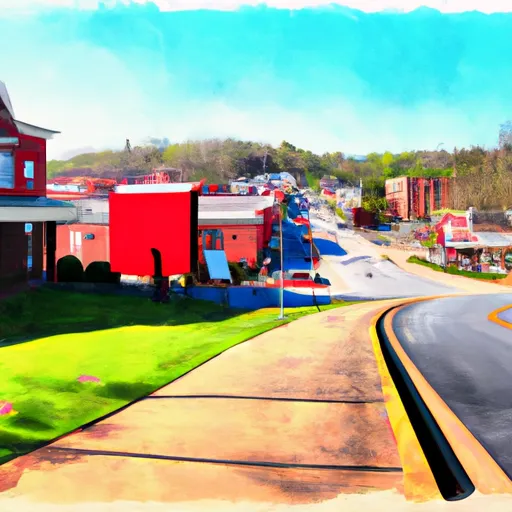-
 Snoflo Premium
Snoflo Premium
Get unlimited access to all our content
With no Ad interruptions! - Start Your Free Trial Login with existing account
Brush-Creek
Eden Index
Climate
7.7
•
Recreation
3.2
•
Community
1.0
•
Safeguard
4.4/10

Brush Creek, Tennessee is a small community located in Smith County. The climate is characterized by hot summers and mild winters, with an average annual temperature of 60°F. The area receives ample rainfall throughout the year, with an average of 53 inches per year. The main water source in Brush Creek is the Cumberland River, which provides abundant recreational opportunities such as fishing, boating, and water sports. The river is also home to a variety of aquatic species, including bass, catfish, and crappie. Other outdoor activities in Brush Creek include hiking, camping, and hunting. The town is surrounded by scenic forests and hills, providing an ideal natural environment for outdoor enthusiasts.
What is the Eden Index?
The Snoflo Eden Index serves as a comprehensive rating system for regions, evaluating their desirability through a holistic assessment of climate health, outdoor recreation opportunities, and natural disaster risk, acknowledging the profound impact of these factors on livability and well-being.
Climate Health Indicator (CHI): 7.7
Brush-Creek receives approximately
1374mm of rain per year,
with humidity levels near 84%
and air temperatures averaging around
15°C.
Brush-Creek has a plant hardyness factor of
7, meaning
plants and agriculture in this region tend to thrive during the non-winter months.
By considering the ideal temperature range, reliable water supplies, clean air, and stable seasonal rain or snowpacks, the Climate Health Indicator (CHI) underscores the significance of a healthy climate as the foundation for quality living.
A healthy climate is paramount for ensuring a high quality of life and livability in a region, fostering both physical well-being and environmental harmony. This can be characterized by ideal temperatures, reliable access to water supplies, clean air, and consistent seasonal rain or snowpacks.
Weather Forecast
Streamflow Conditions
Upper Cumberland
Area Rivers
Upper Cumberland
Snowpack Depths
Upper Cumberland
Reservoir Storage Capacity
Upper Cumberland
Groundwater Levels
Recreational Opportunity Index (ROI): 3.2
The Recreational Opportunity Index (ROI) recognizes the value of outdoor recreational options, such as parks, hiking trails, camping sites, and fishing spots, while acknowledging that climate plays a pivotal role in ensuring the comfort and consistency of these experiences.
Access to outdoor recreational opportunities, encompassing activities such as parks, hiking, camping, and fishing, is crucial for overall well-being, and the climate plays a pivotal role in enabling and enhancing these experiences, ensuring that individuals can engage in nature-based activities comfortably and consistently.
Camping Areas
| Campground | Campsites | Reservations | Toilets | Showers | Elevation |
|---|---|---|---|---|---|
| Anniston Army Depot RV Military | None | 635 ft | |||
| Cheaha State Park | 30 | 2,096 ft | |||
| Bucks Pocket State Park | 36 | 890 ft | |||
| Turnipseed Hunter Camp | 10 | 1,172 ft | |||
| Dekalb County Public Lake | None | 1,317 ft | |||
| Lake Guntersville State Park | 366 | 630 ft | |||
| Lake Chinnabee | 10 | 829 ft | |||
| Noccalula Falls Campground | None | 732 ft | |||
| Jackson County Park | None | 627 ft | |||
| Goose Pond Colony | None | 618 ft |
Nearby Ski Areas
Catastrophe Safeguard Index (CSI):
The Catastrophe Safeguard Index (CSI) recognizes that natural disaster risk, encompassing floods, fires, hurricanes, and tornadoes, can drastically affect safety and the overall appeal of an area.
The level of natural disaster risk in a region significantly affects safety and the overall livability, with climate change amplifying these risks by potentially increasing the frequency and intensity of events like floods, fires, hurricanes, and tornadoes, thereby posing substantial challenges to community resilience and well-being.
Community Resilience Indicator (CRI): 1.0
The Community Resilience Indicator (CRI) recognizes that education, healthcare, and socioeconomics are crucial to the well-being of a region. The CRI acknowledges the profound impact of these elements on residents' overall quality of life. By evaluating educational resources, healthcare accessibility, and economic inclusivity, the index captures the essential aspects that contribute to a thriving community, fostering resident satisfaction, equity, and social cohesion.

